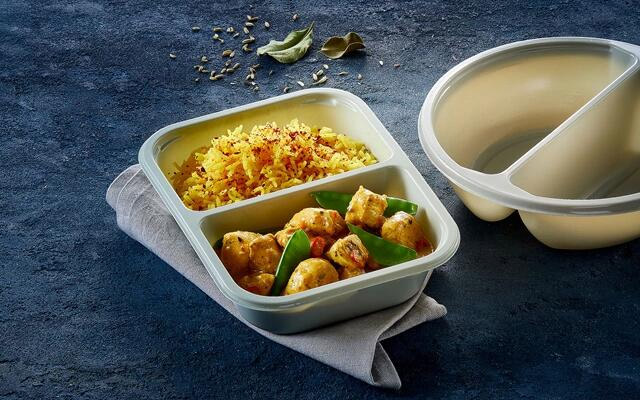0086 574 87739122
Oxygen Transmission Rate (OTR): EVOH trays are recognized for their exceptional barrier properties against oxygen, boasting a low OTR that rivals or exceeds aluminum. This attribute is critical in food packaging, where minimizing oxygen exposure extends shelf life by preventing oxidation and microbial growth. EVOH's effectiveness in maintaining product freshness and quality over extended periods makes it a preferred choice for perishable goods requiring extended shelf stability.
Moisture Barrier: While EVOH provides a good moisture barrier, it does not match the virtually impermeable nature of aluminum. EVOH trays effectively control moisture ingress to a degree that preserves product texture and consistency, making them suitable for a wide range of food products. Manufacturers often combine EVOH with other materials in multilayer structures to enhance moisture barrier performance where critical moisture control is paramount.
Light Barrier: EVOH trays offer moderate protection against UV and visible light, though not as comprehensive as glass. This feature is particularly relevant for products sensitive to light exposure, such as certain beverages, vitamins, or pharmaceuticals. For applications requiring extended light protection, additional packaging solutions or coatings may be necessary to mitigate potential degradation or loss of product efficacy.
Impact Resistance: Compared to aluminum and glass, EVOH trays exhibit lower inherent rigidity and may be more susceptible to physical damage during handling and transportation. We address this challenge through design modifications, such as incorporating reinforcing layers or structural enhancements, to ensure adequate protection against impacts and mechanical stresses throughout the supply chain.
Heat Resistance: Aluminum trays excel in heat resistance, capable of withstanding high temperatures required for oven or microwave applications without compromising structural integrity or barrier properties. In contrast, EVOH trays have thermal limitations and may require supplementary heat-resistant coatings or alternative packaging solutions for applications involving direct heat exposure or rapid temperature fluctuations.
Environmental Impact: EVOH trays typically have a more favorable environmental profile compared to aluminum and glass due to their lighter weight, which reduces transportation-related emissions, and potential recyclability. However, the recyclability of EVOH trays can vary depending on regional recycling infrastructure and technological advancements in sorting and processing facilities. Manufacturers and consumers alike are increasingly prioritizing sustainable packaging solutions, prompting ongoing research and development efforts to enhance the recyclability and environmental sustainability of EVOH-based packaging systems.

Post Comment